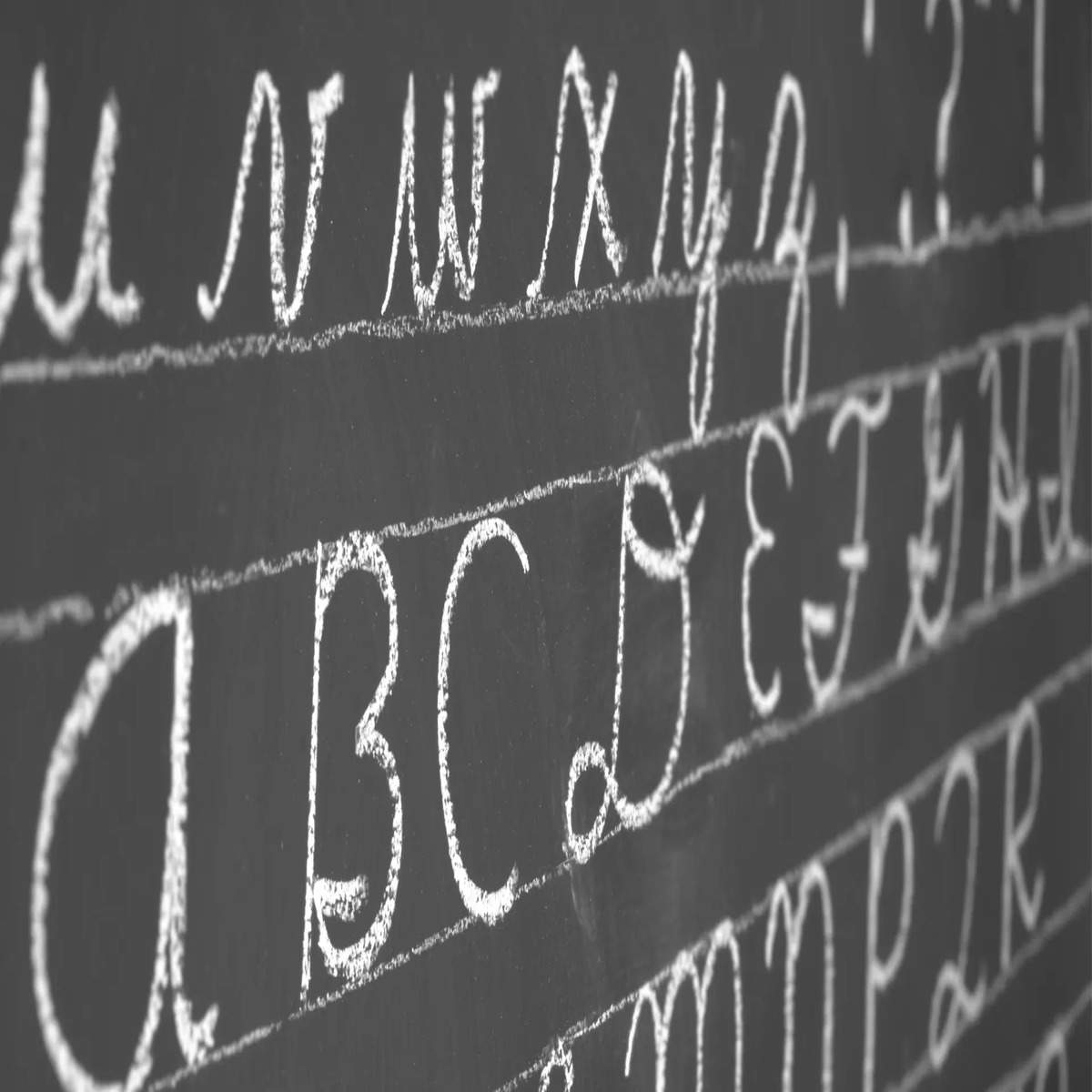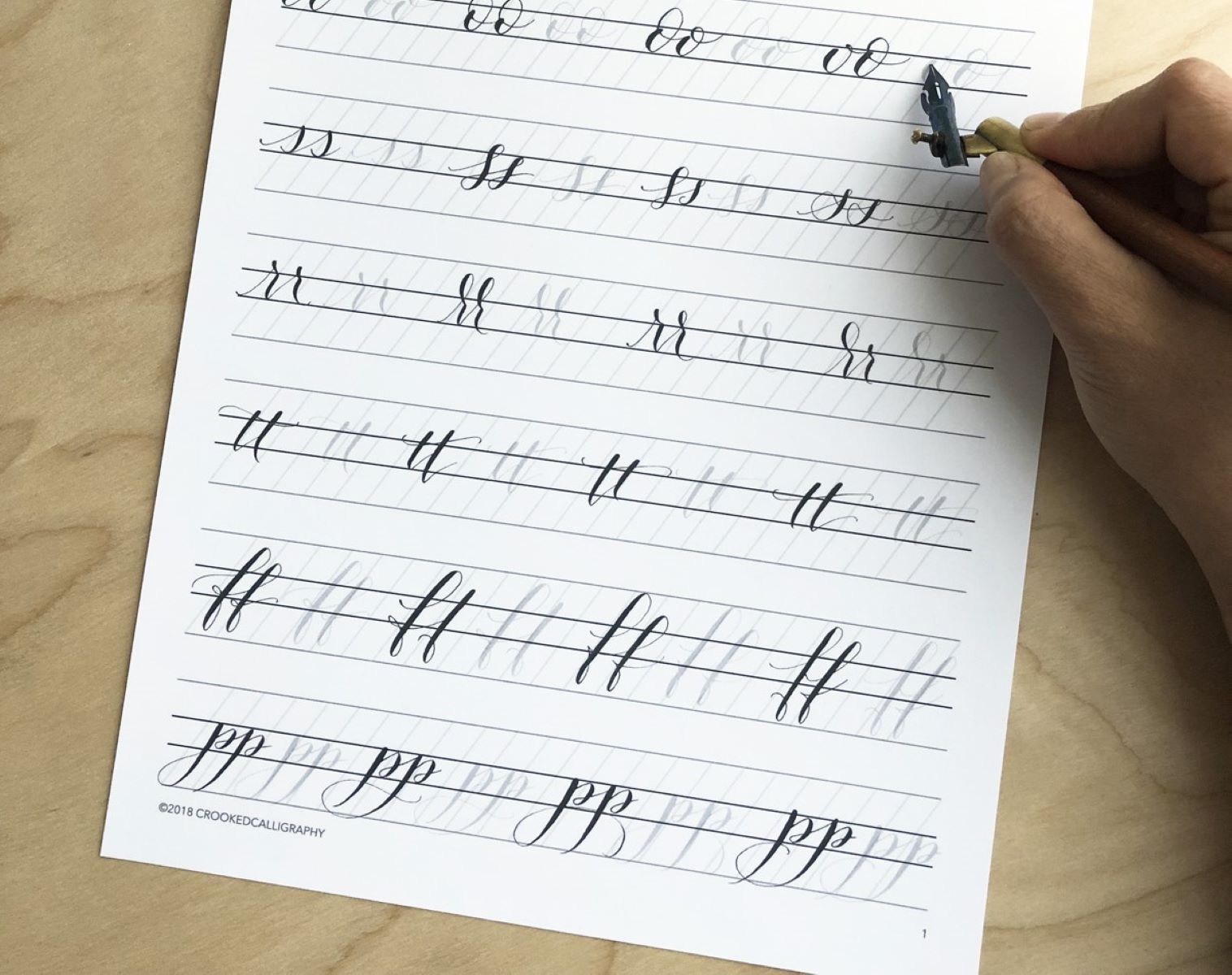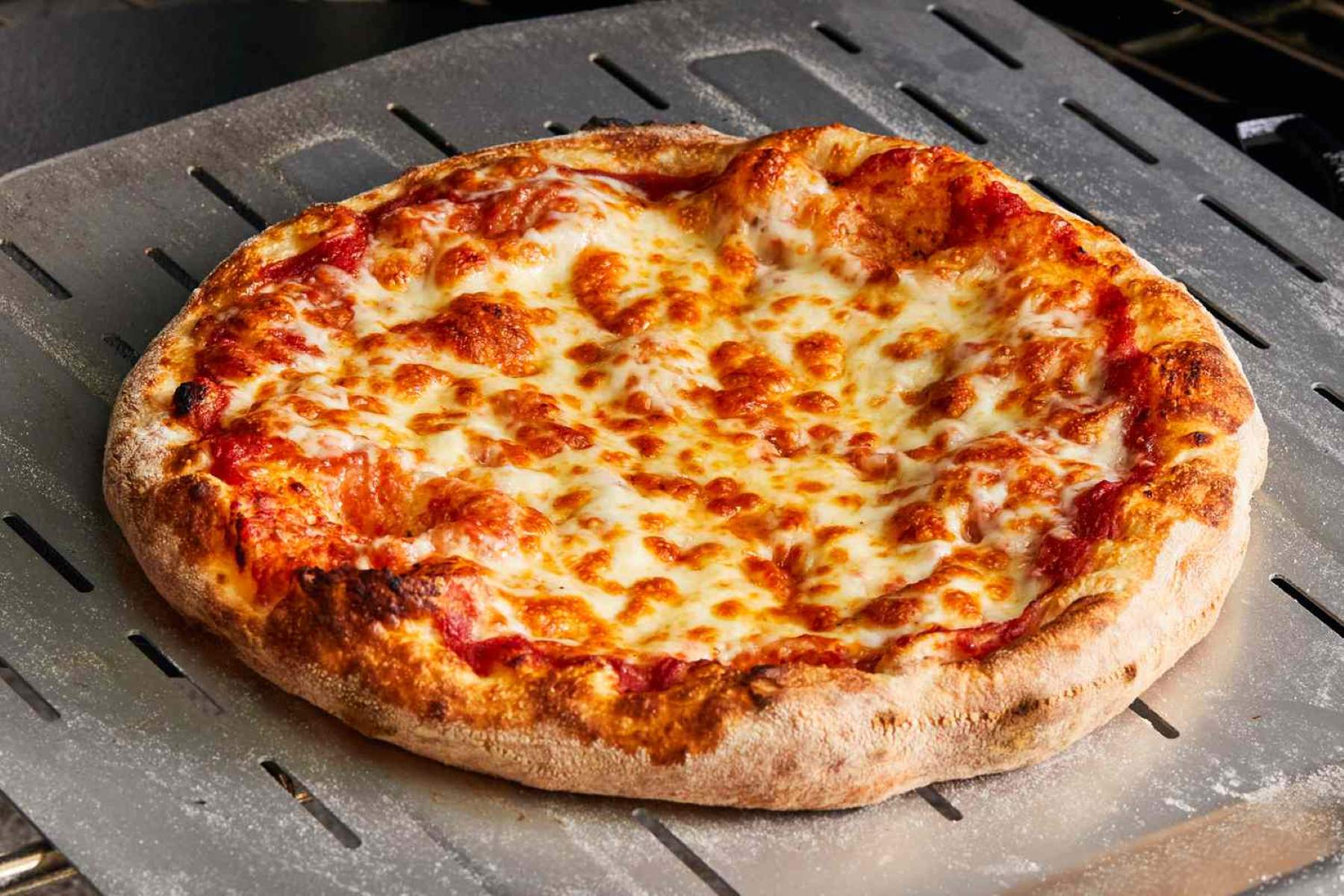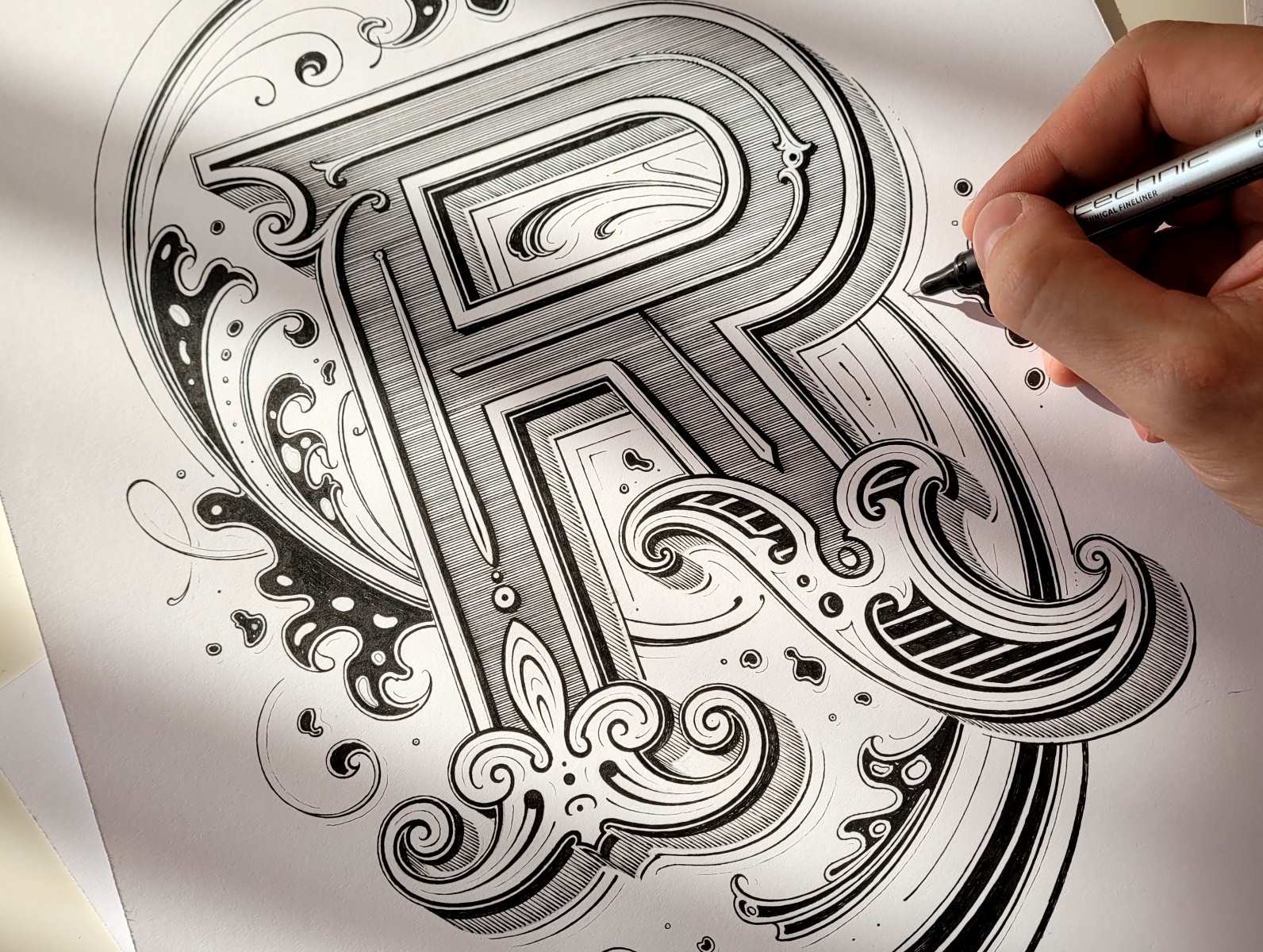Home>Arts and Culture>Unveiling The Artistry Of Cursive Letters


Arts and Culture
Unveiling The Artistry Of Cursive Letters
Published: February 17, 2024
Explore the intricate beauty and cultural significance of cursive lettering in this captivating showcase of arts and culture. Discover the timeless artistry and historical relevance of cursive writing.
(Many of the links in this article redirect to a specific reviewed product. Your purchase of these products through affiliate links helps to generate commission for Regretless.com, at no extra cost. Learn more)
Table of Contents
Introduction
Cursive writing, with its elegant swirls and flowing strokes, has long been revered as a timeless form of artistic expression and communication. The artistry of cursive letters transcends mere penmanship; it embodies a rich history, a sense of tradition, and a touch of individuality. In this digital age, where keyboards and touchscreens dominate our daily interactions, the allure of cursive writing endures as a cherished skill that evokes nostalgia and sophistication.
The graceful curves and loops of cursive script have a unique ability to convey a sense of personal connection and warmth. Each stroke of the pen carries the author's distinct style, revealing glimpses of their personality and emotions. The art of crafting cursive letters fosters a deeper connection between the writer and the written word, infusing each stroke with intention and sentiment.
As we delve into the world of cursive writing, we embark on a journey that intertwines artistry, history, and practicality. From the historical significance of cursive writing to its enduring benefits and contemporary relevance, this exploration promises to unravel the captivating allure of this timeless art form. Join us as we unravel the intricate beauty and significance of cursive writing, and discover the enchanting world of expressive penmanship.
History of Cursive Writing
The history of cursive writing traces back to ancient civilizations, where the art of handwriting first emerged as a means of recording information and communicating ideas. The term "cursive" finds its origins in the Latin word "cursivus," meaning "running" or "flowing." This aptly captures the essence of cursive writing, characterized by its continuous, interconnected strokes that create a seamless flow across the page.
Cursive writing has evolved over centuries, with its earliest forms dating back to the Roman Empire. The Romans developed a script known as "cursiva," which served as a practical and efficient way to write quickly on wax tablets using a stylus. This early cursive script featured connected letters and simplified forms, allowing for swift and fluent writing—a testament to the enduring appeal of cursive's fluidity and speed.
In the medieval era, various styles of cursive writing emerged across Europe, reflecting regional preferences and cultural influences. The elegant and ornate script of Gothic cursive, characterized by its intricate flourishes and embellishments, became synonymous with the artistry of medieval scribes. This period witnessed the flourishing of calligraphy as an esteemed art form, with skilled scribes meticulously crafting manuscripts adorned with exquisite cursive lettering.
During the Renaissance, the Italian humanists championed the revival of ancient Roman scripts, leading to the resurgence of italic cursive—a graceful and slanted style that epitomized the era's intellectual and artistic pursuits. Italic cursive, with its inclined letterforms and rhythmic cadence, gained prominence as a refined and expressive writing style, embodying the spirit of cultural refinement and scholarly elegance.
As cursive writing continued to evolve, the 18th and 19th centuries witnessed the development of copperplate script—a sophisticated and elaborate style characterized by its delicate hairline strokes and sweeping curves. This ornate script became synonymous with formal correspondence and elegant invitations, reflecting the societal emphasis on grace and refinement in written communication.
The 20th century brought about a shift in educational practices, with cursive writing becoming a staple of school curricula worldwide. Generations of students honed their cursive skills, mastering various script styles such as Spencerian and Palmer method, which emphasized rhythmic movement and uniform letterforms.
Today, cursive writing endures as a cherished tradition and a testament to the enduring legacy of handwritten communication. While digital technologies have transformed the way we interact with written language, the artistry and historical significance of cursive writing continue to captivate enthusiasts and scholars alike, preserving the timeless allure of this elegant and expressive form of penmanship.
Benefits of Cursive Writing
The practice of cursive writing offers a myriad of cognitive, creative, and practical benefits that extend far beyond the realm of pen and paper. Embracing cursive as a valuable skill yields numerous advantages, enriching both personal and educational spheres. Let's explore the multifaceted benefits of cursive writing:
-
Enhanced Brain Development: Engaging in cursive writing stimulates diverse regions of the brain, fostering cognitive development and enhancing neural connectivity. Research suggests that the intricate motor skills required for cursive writing can contribute to improved hand-eye coordination and fine motor dexterity, promoting overall brain function and neuroplasticity.
-
Improved Learning and Retention: Studies have shown that students who learn cursive writing demonstrate enhanced learning outcomes, particularly in the areas of reading comprehension and information retention. The act of forming cursive letters by hand engages multiple sensory modalities, reinforcing memory retention and facilitating deeper comprehension of written material.
-
Expressive and Personalized Communication: Cursive writing imbues written communication with a distinct sense of personality and emotion, allowing individuals to convey their thoughts and sentiments with a personal touch. The unique flourishes and stylistic nuances of cursive script enable writers to infuse their words with individuality, fostering a deeper connection with the reader and imbuing written correspondence with warmth and authenticity.
-
Fine-Tuned Motor Skills: Mastering cursive writing hones fine motor skills and manual dexterity, refining the precision and control of hand movements. The deliberate formation of cursive letters requires intricate coordination between the fingers, hand, and arm, leading to improved penmanship and fluidity of writing.
-
Historical and Cultural Appreciation: Embracing cursive writing allows individuals to connect with the rich historical and cultural legacy of handwritten communication. By learning and practicing cursive script, one gains an appreciation for the diverse styles and traditions of penmanship that have shaped human expression throughout the ages, fostering a deeper understanding of linguistic heritage and artistic traditions.
-
Therapeutic and Mindful Practice: Engaging in the rhythmic and meditative act of cursive writing can provide a therapeutic outlet for creative expression and emotional processing. The deliberate and contemplative nature of crafting cursive letters offers a calming and mindful practice, serving as a form of artistic self-expression and a means of promoting mental well-being.
Incorporating cursive writing into daily practice can yield a wealth of benefits, nurturing cognitive development, fostering expressive communication, and preserving the artistry of handwritten expression in an increasingly digitized world. The enduring allure of cursive writing lies not only in its practical advantages but also in its capacity to enrich our lives with creativity, mindfulness, and a profound appreciation for the timeless art of penmanship.
Tips for Improving Cursive Handwriting
Mastering the art of cursive handwriting requires patience, practice, and a mindful approach to refining one's penmanship. Whether you are a novice seeking to enhance your cursive skills or a seasoned enthusiast aiming to elevate your writing proficiency, the following tips offer valuable guidance for honing the elegance and fluency of cursive script.
-
Posture and Grip: Begin by ensuring proper posture and a relaxed grip on the writing instrument. Sit comfortably with your feet flat on the floor, maintaining a straight posture to facilitate smooth movement of the arm and hand. Hold the pen or pencil with a relaxed grip, allowing for controlled yet fluid movement across the page.
-
Consistent Letter Sizing: Strive for uniformity in letter size to achieve a balanced and visually appealing script. Practice maintaining consistent height and width for each letter, ensuring that the overall appearance of your cursive writing exudes a harmonious and well-proportioned aesthetic.
-
Rhythmic Movement: Embrace the rhythmic nature of cursive writing by focusing on the fluidity of your strokes. Engage in deliberate and continuous movements, allowing the natural flow of each letter to guide the rhythm of your writing. Cultivate a sense of grace and rhythm in your cursive script, enhancing its visual appeal and legibility.
-
Mindful Connectivity: Pay close attention to the seamless connectivity between letters, ensuring smooth transitions and fluid linkages throughout your writing. Practice maintaining a consistent slant and spacing between letters, fostering a sense of cohesion and elegance in your cursive script.
-
Practice with Basic Strokes: Dedicate time to practicing fundamental cursive strokes, such as loops, curves, and ascenders/descenders, to refine your dexterity and familiarity with the essential components of cursive writing. Mastering these foundational elements lays the groundwork for achieving proficiency in crafting intricate cursive letters.
-
Copy and Emulate Exemplar Models: Study exemplary cursive handwriting models and seek inspiration from renowned calligraphers or historical scripts. Emulate the stylistic nuances and graceful curves of exceptional cursive writing, allowing these models to inspire and elevate your own penmanship.
-
Consistent Practice: Cultivate a regular practice routine to nurture your cursive writing skills. Set aside dedicated time each day to engage in deliberate and focused practice, gradually refining your technique and enhancing the fluency of your cursive script.
-
Patience and Perseverance: Recognize that mastering cursive handwriting is a gradual process that demands patience and perseverance. Embrace the journey of continual improvement, celebrating each milestone as you refine and elevate the artistry of your cursive penmanship.
By embracing these tips and integrating them into your cursive writing practice, you can embark on a fulfilling journey of self-improvement and artistic expression, ultimately honing the grace and elegance of your cursive handwriting.
Common Cursive Lettering Styles
Cursive writing encompasses a diverse array of lettering styles, each characterized by unique flourishes, slants, and historical influences. From the elegant curves of italic script to the ornate loops of copperplate, the world of cursive lettering abounds with captivating variations that reflect cultural traditions and artistic sensibilities. Below, we explore some of the most prominent and distinctive cursive lettering styles that have left an indelible mark on the art of penmanship.
-
Italic Cursive: Renowned for its slanted and flowing letterforms, italic cursive exudes a sense of sophistication and fluidity. Originating during the Renaissance, italic script features inclined letters with distinctive serifs, creating a visually striking and dynamic appearance. Its graceful slant and rhythmic cadence make it a popular choice for formal invitations, artistic lettering, and expressive calligraphic compositions.
-
Copperplate Script: Characterized by its intricate loops, delicate hairline strokes, and elaborate flourishes, copperplate script epitomizes elegance and ornate refinement. This ornamental style, also known as roundhand, flourished in the 18th century and became synonymous with formal documents, certificates, and decorative lettering. The graceful curves and meticulous attention to detail in copperplate script evoke a sense of opulence and timeless beauty.
-
Spencerian Script: Developed by Platt Rogers Spencer in the 19th century, Spencerian script embodies a harmonious balance of fluidity and precision. With its graceful loops and tapered letterforms, Spencerian script became widely popular in American penmanship, serving as a hallmark of elegant handwriting during the Victorian era. Its graceful curves and rhythmic movement evoke a sense of genteel refinement and artistic finesse.
-
Palmer Method: Introduced by Austin Palmer in the late 19th century, the Palmer method revolutionized cursive handwriting instruction with its emphasis on rhythmic movement and simplified letterforms. This practical and efficient style aimed to streamline the process of learning cursive writing, promoting legibility and speed. The Palmer method's uniform letter slant and rhythmic flow made it a staple of American handwriting education for decades.
-
Gothic Cursive: Reflecting the ornate and decorative aesthetics of medieval calligraphy, Gothic cursive features intricate flourishes, angular letterforms, and dramatic serifs. This distinctive style, also known as blackletter, exudes a sense of historical grandeur and artistic flair. Gothic cursive's bold and expressive lettering has been revered for its visual impact and its association with medieval manuscripts and architectural inscriptions.
Each of these cursive lettering styles encapsulates a rich tapestry of historical significance, cultural heritage, and artistic expression, offering a captivating glimpse into the diverse traditions and stylistic nuances of penmanship. Whether evoking the refined elegance of italic script, the opulent intricacy of copperplate, or the graceful fluidity of Spencerian, these cursive lettering styles embody the enduring allure of handwritten artistry.
Read more: Top Cities That Start With The Letter “D”
Tools and Materials for Cursive Writing
Mastering the art of cursive writing is not only a testament to skill and practice but also a reflection of the tools and materials used to bring the elegant script to life. Whether embarking on a journey to refine one's penmanship or seeking to explore the artistry of cursive letters, the right tools and materials play a pivotal role in shaping the writing experience. From the essential instruments to the finest papers, the world of cursive writing is adorned with an array of elements that elevate the act of penning graceful script.
Fountain Pens:
Fountain pens stand as timeless companions in the realm of cursive writing, offering a seamless flow of ink that enhances the fluidity and elegance of script. The nibs of fountain pens, available in varying widths and flexibilities, allow writers to impart distinct character and expression to their cursive letters. The tactile sensation of gliding a fountain pen across paper lends a sense of intimacy and artistry to the act of writing, making it a cherished tool for enthusiasts and connoisseurs of cursive script.
Calligraphy Pens and Nibs:
For those delving into the intricate art of calligraphy and ornamental lettering, calligraphy pens and nibs serve as indispensable tools for crafting elaborate cursive script. These specialized instruments, designed to create diverse line variations and embellishments, empower writers to explore the ornate beauty of cursive lettering, from flourishing curves to delicate hairline strokes. The versatility of calligraphy pens and nibs enables practitioners to experiment with a myriad of styles and decorative elements, adding a touch of artistry to their cursive compositions.
Quality Paper and Stationery:
The choice of paper and stationery significantly influences the tactile and visual appeal of cursive writing. Smooth, acid-free papers with a subtle texture provide an ideal surface for cursive script, allowing ink to glide effortlessly while enhancing the richness of the written strokes. Fine stationery, adorned with elegant borders and watermarks, elevates the presentation of cursive letters, adding a touch of sophistication to handwritten correspondence and artistic compositions.
Read more: Incredible Fruit Starting With The Letter I!
Writing Guides and Practice Sheets:
Aspiring cursive writers often benefit from the guidance of writing guides and practice sheets that facilitate the mastery of letterforms and connectivity. These resources offer structured exercises for honing letter shapes, slant consistency, and fluidity, providing a foundation for developing a confident and polished cursive style. Writing guides and practice sheets serve as invaluable aids in refining technique and instilling discipline in the art of cursive penmanship.
Ink and Inkwells:
The selection of high-quality ink and ornate inkwells enhances the allure of cursive writing, imbuing each stroke with depth and vibrancy. Rich, archival inks in a spectrum of colors offer writers the opportunity to infuse their cursive script with personality and expression, while ornamental inkwells evoke a sense of traditional elegance, adding a touch of old-world charm to the writing desk.
Illuminated Manuscript Materials:
For enthusiasts of historical calligraphy and illuminated manuscripts, specialized materials such as gold leaf, vellum, and quills open a gateway to the ancient art of cursive lettering. These materials, steeped in tradition and craftsmanship, allow practitioners to delve into the meticulous artistry of medieval scribes, creating stunning replicas of illuminated letters and ornate script.
From the timeless allure of fountain pens to the meticulous artistry of calligraphy tools, the world of cursive writing is adorned with a rich tapestry of instruments and materials that elevate the act of penning graceful script into a captivating and immersive experience. Each tool and material serves as a testament to the enduring legacy of handwritten communication, preserving the artistry and tradition of cursive penmanship in a digital age.
Cursive Writing in the Digital Age
In an era dominated by digital communication and technological advancements, the enduring art of cursive writing continues to carve its niche as a cherished and relevant form of expression. While keyboards, touchscreens, and voice-to-text technologies have revolutionized the way we communicate, the allure of cursive writing perseveres as a testament to the enduring appeal of handwritten artistry and personal connection.
Amidst the digital landscape, cursive writing serves as a poignant reminder of the intrinsic human touch that permeates handwritten correspondence. The deliberate strokes and graceful curves of cursive script bear the imprint of the individual, evoking a sense of intimacy and authenticity that transcends the ephemeral nature of digital text. In an age characterized by fleeting digital interactions, the permanence and emotional resonance of handwritten cursive letters offer a timeless and tangible means of forging meaningful connections.
Furthermore, the practice of cursive writing holds profound implications for cognitive development and literacy in the digital age. Research suggests that engaging in the physical act of cursive writing stimulates neural pathways and enhances cognitive function, contributing to improved memory retention and critical thinking skills. As digital interfaces increasingly permeate our daily lives, the tactile and kinesthetic experience of cursive writing assumes a pivotal role in nurturing cognitive development and preserving the art of manual dexterity.
Moreover, the enduring relevance of cursive writing extends to the realm of artistic expression and creative enrichment. In an age marked by digital uniformity, the distinctive flair and individuality of cursive script offer a canvas for personal expression and artistic refinement. The nuanced variations and stylistic nuances of cursive lettering styles provide a platform for exploring the artistry of penmanship, fostering a sense of creativity and aesthetic appreciation amidst the digital milieu.
As educators and advocates of penmanship seek to uphold the legacy of cursive writing, its integration into educational curricula assumes heightened significance in the digital age. By imparting the art of cursive handwriting to future generations, educators preserve a cultural heritage and instill an appreciation for the artistry and historical legacy of handwritten communication. The integration of cursive writing into digital learning environments bridges the timeless elegance of pen and paper with the technological landscape, nurturing a holistic approach to literacy and cognitive development.
In essence, cursive writing endures as a poignant and relevant art form in the digital age, offering a harmonious convergence of tradition, cognitive enrichment, and artistic expression. As we navigate the digital frontier, the enduring allure of cursive script serves as a testament to the enduring legacy of handwritten communication, preserving the artistry and intimacy of penmanship amidst the ever-evolving landscape of digital communication.
Read more: Animal Name Ending With The Letter “T”
Conclusion
In conclusion, the artistry of cursive writing transcends mere penmanship, embodying a rich history, a sense of tradition, and a touch of individuality. From its ancient origins in the Roman Empire to its enduring relevance in the digital age, cursive writing remains a cherished and timeless art form that evokes nostalgia and sophistication. The graceful curves and loops of cursive script have a unique ability to convey a sense of personal connection and warmth, fostering a deeper connection between the writer and the written word.
The historical significance of cursive writing, spanning across ancient civilizations and cultural epochs, reflects the enduring legacy of handwritten communication. From the elegant script of italic cursive to the ornate beauty of copperplate, the diverse cursive lettering styles encapsulate a rich tapestry of historical and artistic traditions, offering a captivating glimpse into the artistry of penmanship.
Furthermore, the cognitive, creative, and practical benefits of cursive writing underscore its enduring relevance in contemporary society. From enhanced brain development and improved learning outcomes to the expressive and personalized nature of handwritten communication, cursive writing nurtures cognitive enrichment and artistic refinement. The art of crafting cursive letters fosters a deeper connection between the writer and the written word, infusing each stroke with intention and sentiment.
As we navigate the digital age, the practice of cursive writing assumes heightened significance in preserving the artistry and tradition of handwritten communication. Amidst the digital landscape, cursive writing serves as a poignant reminder of the intrinsic human touch that permeates handwritten correspondence, offering a timeless and tangible means of forging meaningful connections. The enduring relevance of cursive writing extends to the realm of artistic expression and creative enrichment, providing a canvas for personal expression and aesthetic appreciation amidst the digital milieu.
In essence, cursive writing endures as a poignant and relevant art form that bridges tradition, cognitive enrichment, and artistic expression. Its integration into educational curricula and digital learning environments upholds a cultural heritage and instills an appreciation for the artistry and historical legacy of handwritten communication. The enduring allure of cursive script serves as a testament to the enduring legacy of penmanship, preserving the artistry and intimacy of handwritten communication amidst the ever-evolving landscape of digital communication.












